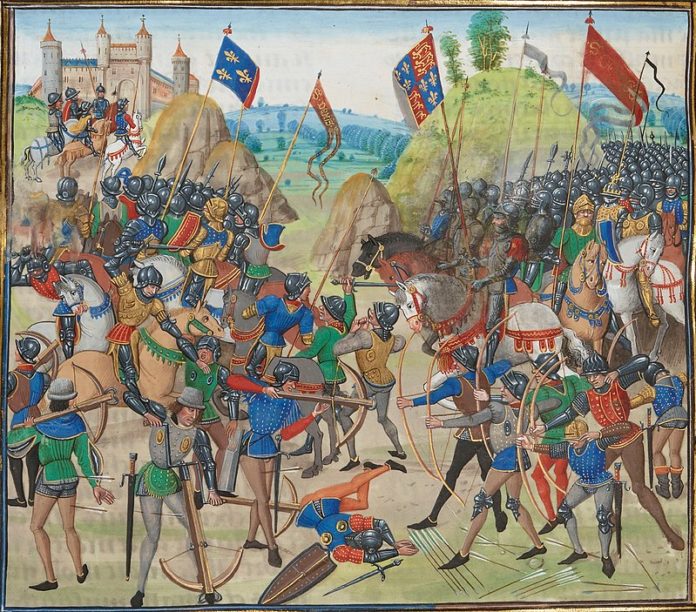From the 1290s onward, the armies of England began to use new military tactics which revolved around massed archery, defensive deployment, and dismounting their warriors.
The development of the new tactics came as a response to the wars in Ireland and Wales. In these wars, new weapons and tactics were introduced to the English monarchs, who were (for the most part) quick to adapt them.
The Longbow
Edward I conquered Wales over the course of the thirteenth century, and in the process became impressed with the range, volume of fire, and penetrating power of the yew longbows wielded by the Welsh soldiers his armies faced. He recruited several regiments of Welsh longbowmen, who served as light infantry in his campaigns in Scotland.
The longbow required a great deal of strength and training to use effectively, as the draw weight of the bow could often exceed one hundred and fifty pounds. To this end, Edward banned all sports on Sundays in England-except archery. It was the time of training, not to mention the cost to do so, which dissuaded other nations from adopting longbowmen en masse.
Defensive Deployment
The English armies of the day often deployed defensively, with “Battles” of longbowmen and men-at-arms in alternating order, with longbowmen on the flanks. There are many theories about this, but the most likely one is that they faced inward, in order to create crossfire in front of the men-at-arms. The longbowmen tended to protect their front with pits, stakes, trenches or the like, which proved very effective against the French mounted knights during the Hundred Years’ War.
The terrain was very important, and the English always deployed using it to their advantage. This was an essential part of the chevauchee (raiding and burning) strategy of the English, which forced their enemy to engage them on favorable terms. At the battle of Crecy in 1346, the army deployed on the slope of a hill. At the famous battle of Agincourt in 1415, they deployed with woods to either side and a great field of mud in front of them, to prevent flank attacks and impede the enemy’s mobility.
The Myth of the Longbow
There has been quite a lot said about the longbow in historical texts, and and many of these tend to elevate the longbow to a sort of medieval heavy machine gun, decimating all its arrows touched at unheard-of ranges. It must be remembered, however, that while they often represented a large part of the army, their light armor and lack of close combat training made them vulnerable should an enemy manage to come to blows with them. This led to the English defeat at the battle of Patay in 1429. At Bannockburn in 1304, Edward II left his longbowmen too far on the flanks, and they were massacred by the reserve of Scottish cavalry. The longbowmen did perform well in the melee at Agincourt, but in the ankle-deep mud they were more nimble and had more endurance than the dismounted French chivalry.
All parts of the English army needed to work together in order for success to be reaped. The battle of Poitiers in 1356 was not won by longbow fire, but by hard hand-to-hand fighting on both sides, and, as stated by Matthew Bennett, because “[The French] were not flexible enough to cope with the situation…”
At the Battle of Formigny in 1450, the English longbowman fell victim to an enemy which he could not outrange: field artillery. The casualties inflicted by these forced the English out of their defensive deployment and into an offensive footing, where they were handily defeated.








